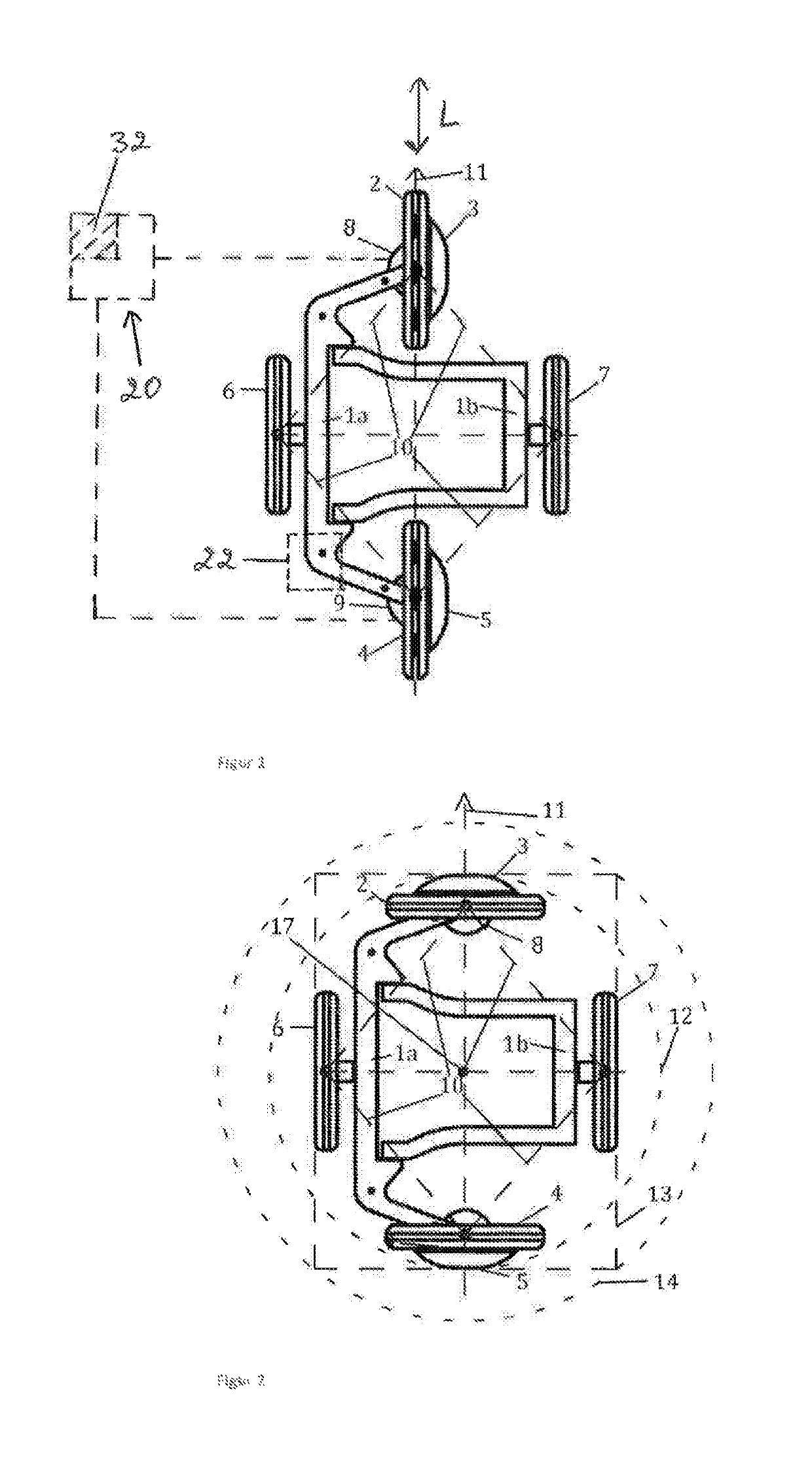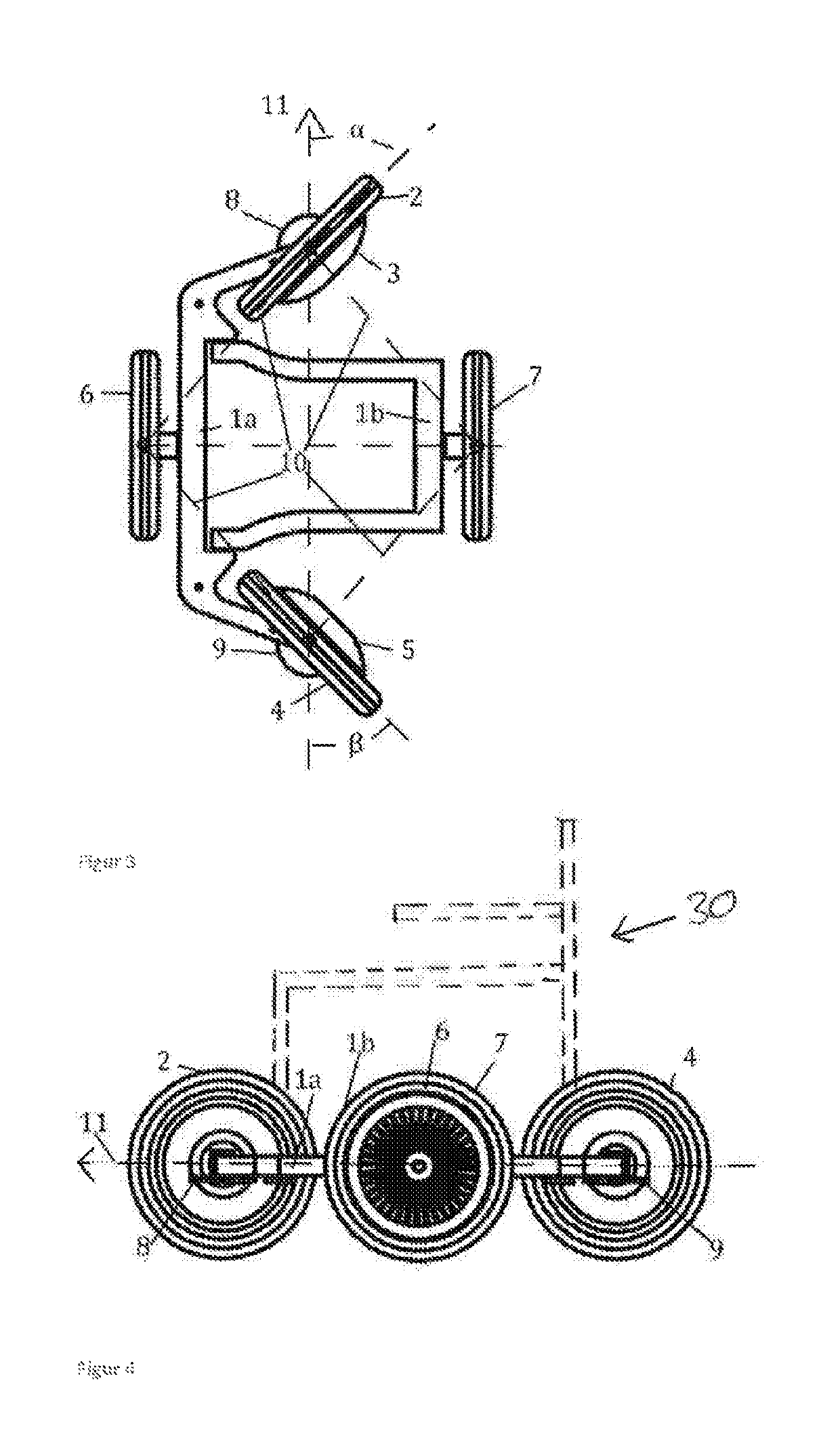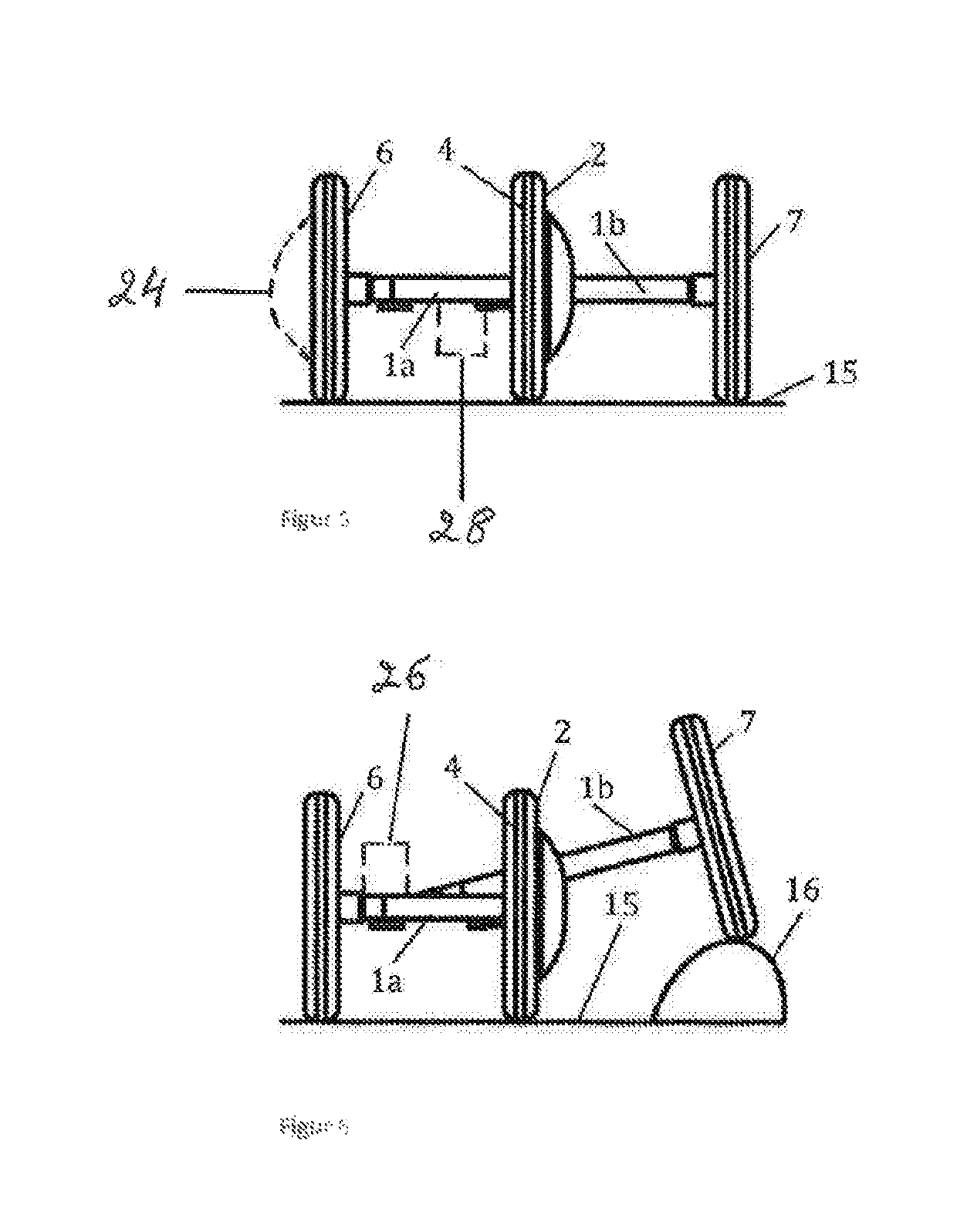Chassis for vehicle
a vehicle and chassis technology, applied in the field of chassis for vehicles, can solve the problems of difficult manoeuvrability of wheelchairs, difficulty in maneuvering wheelchairs, front wheels may have problems of getting stuck in loose surfaces, etc., and achieve the effects of improving driving distance, manoeuvrability, weight, volume, and ability to climb obstacles
- Summary
- Abstract
- Description
- Claims
- Application Information
AI Technical Summary
Benefits of technology
Problems solved by technology
Method used
Image
Examples
Embodiment Construction
[0022]The presently disclosed invention relates to a chassis for vehicle, comprising: a rigid frame, a pair of side wheels in a parallel configuration, a steerable front wheel, a steerable rear wheel, at least one electric motor, wherein at least one of said front wheel or rear wheel is connected to and driven by the at least one electric motor, the chassis characterized in that said front and rear wheels are mutually connected through a turning mechanism arranged to turn said front and rear wheels simultaneously and synchronously between: a middle position in which the axles of the front and rear wheels are substantially parallel with the axles of the side wheels, and left or right end positions, in which the axles of the front and rear wheels are substantially perpendicular to the axles of the side wheels.
[0023]The rigid frame may be an asymmetric construction about a longitudinal axis L in the forward direction 11 of the chassis in such an embodiment said rigid frame constitutes ...
PUM
 Login to View More
Login to View More Abstract
Description
Claims
Application Information
 Login to View More
Login to View More - R&D
- Intellectual Property
- Life Sciences
- Materials
- Tech Scout
- Unparalleled Data Quality
- Higher Quality Content
- 60% Fewer Hallucinations
Browse by: Latest US Patents, China's latest patents, Technical Efficacy Thesaurus, Application Domain, Technology Topic, Popular Technical Reports.
© 2025 PatSnap. All rights reserved.Legal|Privacy policy|Modern Slavery Act Transparency Statement|Sitemap|About US| Contact US: help@patsnap.com



